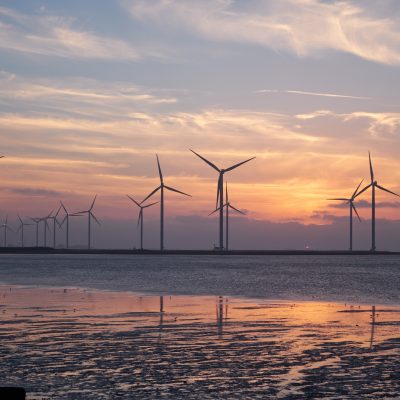[fusion_text]Tucked away in Scotland’s far north is archipelago, famous for its high cliffs battered by rough seas, holding many secrets from its Neolithic past… and more recently the future of renewable energy.
The Orkney Islands, recently voted as a best place to live in the UK, are at the forefront of technological energy revolution. Once entirely dependent on coal and oil power from Scottish mainland, the islands now generate 120% of their energy locally from renewable sources.
This has changed the life of Orcadians in many positive ways. Community wind-turbines are generating electricity for local settlements, people are driving cars powered by electricity and new projects are driving progress in housing development, providing affordable new houses powered by renewable energy. A cleaner, greener, fairer futuristic vision of living has become a reality for Orcadians.
In the past, life on the islands relied on farming and fishing. This changed with the discovery of gas and oil in the North Sea, bringing both positives and negatives for the islands. However, with declining oil reserves and volatile prices, the ‘end of an era’ has approached and Orcadians are embracing a more sustainable low-carbon future.
The Orkney Islands have become one of the most promising sites for low-carbon energy research in the world. In 2003, the European Marine Energy Centre (EMEC) was established with funds from the UK and Scottish government, EU and Orkney Islands Council itself. The centre has become one of the key players in the transformation of Orkney as a renewable power provider. It is the first and only centre of its kind in the world to provide developers of both wave and tidal energy converters with technologies that generate electricity (by harnessing the power of waves and tidal streams) with purpose-built, grid-connected and independently accredited open-sea testing facilities.
Now creating surplus in locally sourced energy, new projects aim to overcome local grid constraints, ‘surf n turf’ project take the excess power and use it to produce and store hydrogen. While Orkney has decarbonised its electricity sector, sea transport is still heavily dependent on fossil fuels. A new project is underway to develop a ‘hydrogen injection system’ to power ferries and larger vessels. The potential for developing hydrogen powered vessels is one of the most exciting prospects, particularly given the number of carbon-intensive inter-island ferry services in the Orkney Islands.
Investment in renewable energy and its associated research has attracted more people to live, work, and study on the islands. Islanders used to have to leave to get tertiary education, but it is now possible to study for an MSc in renewable energy at a Heriot-Watt University campus in Stromness. A new generation of Orcadians have grown up to see renewable energy as the way of the future, something quite normal that will provide greater opportunities for their children to stay on the island, with genuine prospects for employment in meaningful jobs requiring a wide range of skills and qualifications.
With an increasing international push to lower carbon emissions, Orkney is an attractive model to follow as it continues its journey into renewable energy sources. It could serve as a template for other islands and cities looking to transition towards low-carbon development.
For more information see just transition research paper produced by Agulhas Applied Knowledge and funded by the Children’s Investment Fund Foundation with case studies from Scotland, China, Germany and Spain.[/fusion_text][sharing tagline=”” tagline_color=”” title=”” link=”” description=”” pinterest_image=”” icons_boxed=”” icons_boxed_radius=”4px” color_type=”” box_colors=”” icon_colors=”” tooltip_placement=”” backgroundcolor=”#f2f2f2″ class=”” id=””][/sharing]



